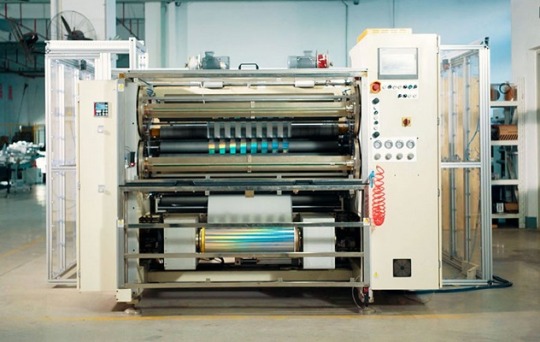#Slitter machine manufacturer
Explore tagged Tumblr posts
Text
#conpaptex#machine#manufacturers#flexible packaging#packagingmachinery#packaging industry#plastic#plastic slitter rewinder machine#industry#slitter rewinder machine
1 note
·
View note
Text
KEW ENGG. & MFG. PVT. LTD., we specialize in manufacturing cutting-edge Heavy Duty Drum Slitter Machine designed to meet diverse industrial requirements. Whether it’s for paper, plastic, textile, or packaging applications, our machines deliver unparalleled precision and durability.
#kewengg#machine#machinery#industry#machinemanufacture#industrial#exporter#supplier#manufacturer#manufacturing#Heavydutydrum#heavyduty#slittermachine#paper industry#papermachinery
2 notes
·
View notes
Text
Manufacturer of Flexible Packaging, Paper, Tire-Cord, and Textile Machinery
Krishna Engineering Works is a company based in India that specializes in manufacturing and supplying a wide range of industrial machinery and equipment. The company was established in 1980 and has since become a well-established name in the industry.
Krishna Engineering Works offers a wide range of products including Flexible Packaging, Paper, Tire-Cord, and Textile Machinery, Slitter Rewinder Machines, Coating Machines, and many more. The company's products are widely used in industries like packaging, printing, paper conversion, and textiles.
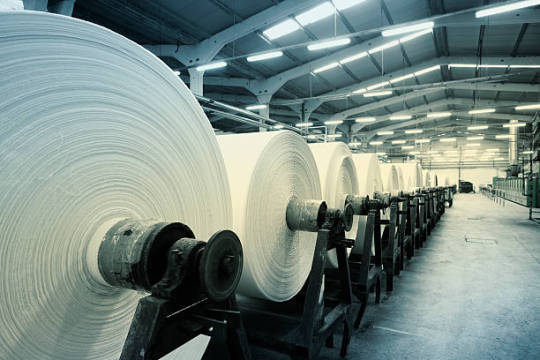
#Flexible Packaging#Paper#Tire-Cord#Textile Machinery#Textile Processing Machinery#Textile Processing Machine Price#Textile Machine Manufacturer
2 notes
·
View notes
Text
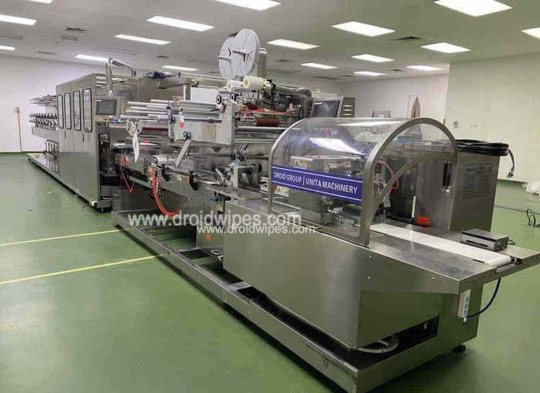
Droid is a leading manufacturer of wet wipes machines, offering a wide range of machines for various applications. From slitters and saturators to folding and packaging machines, Droid has got you covered. With their state-of-the-art technology and expertise, Droid ensures that the wet wipes produced are of the highest quality and meet all necessary safety and hygiene standards.
0 notes
Text

Krishna Engineering Works has a solution that best fits your manufacturing unit or enterprise. Know more about its latest machines from Krishna Engineering Works. Upgrade your paper-making productivity and establish your company as an industry leader in the long term.
heavy duty type slitter drum rewinder machine can process all kinds of paper of any GSM thickness. In our heavy duty series paper slitting rewinding machine, the rewinding diameter can be achieved up to 1200mm.
#krishnaengineeringworks#machine#manufacturer#machinery#industry#export#supplier#industrial#machinemanufacturer#slitterrewindermachine#heavydutyslitterrewindermachine#slittingrewindingmachine#paperindustry#papermachinery
1 note
·
View note
Text
Webtech Group’s live demonstrations at Printpack 2025
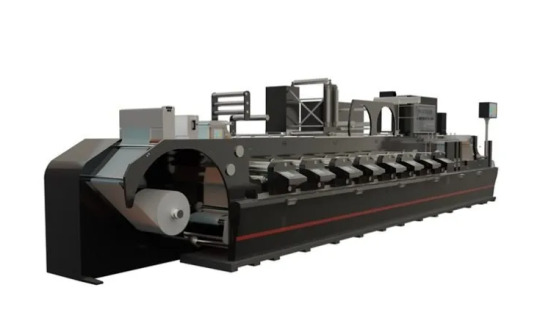
Webtech Group, a leading manufacturer of printing and paper-converting machinery, will showcase its range of machines at Printpack 2025, to be held from 1 to 5 February 2024, at India Expo Centre and Mart in Greater Noida. It show demonstrate the fully servo flexographic printing machine in 450 mm working width, thermal roll slitting rewinding machine with single color online flexo printing, honeycomb paper die cutting machine, and servo-controlled label slitter rewinder machine

Along with the showcased machines, the Webtech team will highlight its entire range of products, including fully servo flexographic printing machines, web offset printing machines, slitting rewinding machines, and die cutting machines at its stand. The team will discuss technological advancements, share insights into the industry’s trajectory, and offer tailored solutions.
Singh emphasized the strategic importance of participating in Printpack 2025. “Printpack provides a vital platform to showcase technological advancements to a global audience and expand our clientele. The exhibition offers invaluable insights into emerging trends and challenges, enabling us to enhance our product offerings and stay ahead of market demands,” he said.
By participating in such exhibitions, Webtech aims to solidify its industry presence while forging new relationships with global clients. “For Printpack 2025, we aim to build on our previous successes by introducing our latest fully servo flexographic printing machine and other innovations. We look forward to engaging with industry leaders and further strengthening our position in the market,” Singh added.
Singh highlighted the evolution of the printing and packaging industry, driven by increasing demand for sustainable and flexible packaging solutions. Key advancements, such as fully servo-driven machines, automation, and eco-friendly substrates, are shaping the future of the industry.
“The printing and packaging sector is experiencing robust growth, with sustainability and precision at its core. We are poised to capitalize on these trends by offering innovative and efficient machinery that addresses challenges such as waste reduction and enhance productivity,” Singh explained.
Webtech International Machineries will be present in hall no 5, stands C19 and C28.
0 notes
Text
Bopp / Paper Tape Coating Machine
Mohindra is recognized as one of the top manufacturers of Doctoring Slitting Machines in India. Although we are located in Delhi, we supply our wide range of products across the country. We use premium quality raw materials in the production of all our machines. As you may know, the demand for Doctoring Slitting Machines is increasing daily, driven by the rising consumption of paper bags in India. Mohindra Machine stands out as a leading manufacturer of Doctoring Slitting Machines. We are dedicated to producing and supplying these machines to potential customers in the market. The Doctoring Slitting Machine is designed to cut and convert large sheets of paper, foil, and film materials into narrower rolls. These machines consist of three main components: the slitter, unwind, and rewind.
#Bopp paper tape coating machine price#Bopp paper tape coating machine price in india#Bopp paper tape coating machine in india#Bopp paper tape coating machine for sale
1 note
·
View note
Text
Jandu PPM - Printing and Packaging Machines Manufacturer

Jandu Printing and Packaging Machines Company is a professional Slitting and Rewinding Machine manufacturer and supplier in Delhi, India. We are manufacturing an exclusive range of slitter and rewinder machines, which are widely used for cutting and rewinding paper.
Jandu PPM offers highly versatile Roll To Sheet Cutting Machine and centre drum slitting and rewinding machines suitable for slitting plastic films, paper, and metal foils. This machine comes with slitting.
Contact Jandu Printing and Packaging Machines
Company: Jandu PPM
Call: +91-9811100842, 9811510842
Address: 25/18, Gali No.6, Master Mohalla Libaspur, Delhi-110042
#SlittingandRewindingMachine#SlitterandRewinderMachine#CentreDrumSlittingAndRewindingMachine#ReelToSheetCuttingMachine#RollToSheetCuttingMachine#JanduPPM
1 note
·
View note
Text

A Paper Cutter Rewinder Machine cuts large paper rolls into smaller, much more manageable parts and rewinds them simultaneously; it is machinery that integrates precision-cutting technology together with efficient winding mechanisms to be productive and cut waste to minimum.
Conpaptex's Paper Cutter Rewinder Machine leading the way for the paper, packaging, and printing industries in offering seamless performance.
#conpaptex#paper cutter rewinder machine#paper cutter#slitter rewinder machine#machine#manufacturers#paper industry#paper machinery#paper#machinery
1 note
·
View note
Text
Jandu PPM - Slitting and Rewinding Machine Manufacturer
Jandu Printing and Packaging Machines Company is a leading Slitting and Rewinding Machine manufacturer and offers an exclusive range of slitter and rewinder machines, which are widely used for cutting and rewinding paper. Key Features of Slitting and Rewinding Machines Latest in Design Good Performance Simple in Operating Easy Maintenance High Speed Contact for Slitter and Rewinder…
0 notes
Text
How to Maximize Slitter Blade Sharpness for Superior Cutting Performance
Summary
Maintaining the sharpness of a slitter blade is essential for achieving precise cuts, minimizing downtime, and improving operational efficiency. This article explores why sharpness retention matters, factors affecting blade longevity, advanced techniques for durability, and best practices for maintenance, ensuring your cutting tools perform at their best.
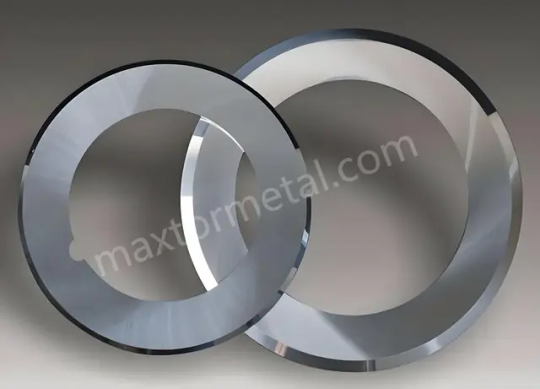
Introduction
In industrial applications, precision cutting is the cornerstone of efficiency and quality. The slitter blade, a critical component in industries like paper, metal, and plastic processing, must remain sharp to perform effectively. Dull blades lead to uneven cuts, wasted material, and costly downtime. This article delves into the technologies and strategies to retain the sharpness of slitting tools, helping you optimize performance and reduce costs.
By understanding the factors influencing blade sharpness and adopting advanced techniques, you can ensure your operations run smoothly. Let’s explore how you can keep your slitter blades sharp and effective for longer periods.
Why Sharpness Retention Matters for Slitter Blades
Sharpness plays a critical role in ensuring the efficiency and precision of industrial cutting processes. Whether you are cutting thin plastic films, thick metal sheets, or delicate paper rolls, maintaining a sharp edge on your slitter blade is essential. Let’s examine the specific impacts dull blades have on your operations:
1. Uneven Cuts
Dull blades fail to create clean, consistent edges, which can compromise the quality of the final product. For example, in the paper industry, jagged edges can lead to product rejection, affecting customer satisfaction and brand reputation. According to industry reports, manufacturers using dull blades experience up to 15% more defective products than those using well-maintained cutting tools.
2. Material Waste
Poor sharpness often results in inaccurate cuts, generating excess material waste. In industries handling expensive raw materials like aluminum or specialty polymers, this waste can represent significant financial losses. A study in a metal processing plant found that switching to precision-sharpened slitting knives reduced scrap rates by 25%, saving approximately $100,000 annually.
3. Increased Wear on Equipment
Using a dull blade requires more force to achieve the same cuts, which puts undue stress on machinery. Over time, this can lead to faster wear and tear on mechanical components, increasing maintenance costs and the risk of equipment failure. Preventive maintenance through blade sharpness retention can lower machine repair expenses by 20%.
4. Downtime for Maintenance
Frequent blade sharpening or replacement interrupts production schedules, resulting in costly downtime. In high-volume production environments, even an hour of unscheduled maintenance can translate into thousands of dollars in lost revenue. Maintaining sharper blades significantly extends service intervals, keeping your operations running smoothly.
The Competitive Edge
Maintaining sharp blades is more than just a technical necessity—it’s a strategic advantage. Companies that invest in blade sharpness retention report up to 30% better operational efficiency, giving them an edge in competitive markets.
Keep reading to explore the factors affecting sharpness and how to address them.
Key Factors Affecting Slitter Blade Sharpness
1. Blade Material
Blade composition significantly affects sharpness retention. High-grade alloys such as M2 tool steel, tungsten carbide, and ceramic composites offer excellent hardness and durability. A coated slitting blade can last twice as long as an uncoated one under similar conditions. For example, tungsten carbide-coated blades can withstand up to 500,000 cuts before requiring sharpening, compared to just 250,000 for standard steel.
2. Cutting Environment
The type of material being processed greatly influences blade wear. Harder materials like steel generate more friction and heat, which can quickly degrade blade edges. Additionally, cutting plastics or rubber often produces sticky residues that dull blades faster if not cleaned properly. Addressing these environmental factors with proper lubrication and cleaning can extend blade life by up to 40%.
3. Maintenance Practices
Inadequate blade maintenance is a major factor in premature dulling. For instance, incorrect sharpening angles can weaken the blade edge, while poor cleaning techniques may leave residues that accelerate wear. Implementing systematic maintenance schedules helps ensure consistent blade performance.
4. Innovative Blade Design
Advanced blade designs optimize edge geometry for specific applications. For example, beveled edges reduce cutting resistance and friction, improving durability. Laser-precision manufacturing techniques can achieve tolerances as fine as 0.001mm, creating sharper, more reliable blades.
Advanced Techniques to Prolong Slitter Blade Sharpness
1. Coating Technologies
Special coatings protect blade surfaces from wear and corrosion. For example, titanium nitride coatings increase surface hardness, allowing blades to retain sharpness 50% longer in high-speed operations. Similarly, diamond-like carbon coatings reduce friction, lowering operational temperatures and improving edge retention.
2. Cryogenic Treatment
Cryogenic processing aligns the internal structure of metals, enhancing their hardness and resistance to wear. Studies show that cryogenically treated industrial cutting tools last 30% longer than untreated blades in heavy-duty environments.
3. Precision Grinding and Sharpening
Grinding machines capable of maintaining a consistent edge angle ensure that the blade delivers smooth, precise cuts. Automated sharpening systems eliminate human error, providing consistent results that increase blade longevity by up to 20%.
4. Custom Blade Design
Tailored blade solutions enhance performance for specific applications. For example, rotary knives designed for textile cutting may feature serrated edges to minimize wear while ensuring clean cuts. Custom designs reduce maintenance frequency and improve process efficiency.
Maintenance Best Practices to Retain Blade Sharpness
Routine care and attention can drastically extend the lifespan of your slitting knives.
1. Routine Inspections
Perform regular checks for visible damage, including nicks, burrs, or uneven wear. An inspection log helps identify patterns and predict when blades require sharpening or replacement.
2. Proper Cleaning
Use non-abrasive tools and solvents to remove residues after each use. For example, a specialty blade-cleaning solution can reduce buildup by 50%, minimizing the risk of dulling.
3. Lubrication
Choose a lubricant that matches the cutting environment. For example, water-based lubricants are effective for heat-sensitive applications, while oil-based options are ideal for heavy-duty metal cutting. Proper lubrication reduces friction, extending blade life by 15%-25%.
4. Correct Storage
Preventing physical damage during storage is crucial. Blades should be kept in dry, temperature-controlled environments, and protective covers should always be used.
5. Operator Training
Ensure operators understand proper blade handling techniques, such as avoiding direct contact with edges and correctly aligning blades during installation. Trained staff are less likely to cause accidental damage, reducing blade replacements by up to 10%.
By adopting these best practices, you can ensure peak performance from your cutting tools.
How Our Slitter Blades Stand Out in Sharpness Retention
At [Your Company Name], we prioritize precision and durability in every slitter blade we manufacture. Here’s why our products excel:
Superior Materials: Our blades are crafted from premium alloys and coated with cutting-edge technologies to ensure unmatched sharpness retention.
Advanced Manufacturing: We use precision grinding and laser cutting to create blades tailored to your specific needs.
Proven Performance: Our blades have helped clients reduce downtime by 40% and improve product quality consistently.
Client Testimonial:
“We switched to Metal’s industrial cutting tools, and the difference was night and day. Less waste, smoother cuts, and longer blade life!” – Operations Manager, Packaging Industry
Our commitment to quality ensures that your cutting operations remain seamless and efficient.
Contact us today to learn how we can optimize your cutting processes.
Conclusion and Call to Action
Sharpness retention is the cornerstone of efficient and cost-effective cutting operations. By understanding the factors that affect slitter blade performance, leveraging advanced technologies, and following best maintenance practices, you can enhance blade durability and reduce operational costs.
Ready to upgrade your cutting tools? Discover how our advanced solutions can revolutionize your operations. Custom Industrial Blades Manufacturer in China and Custom Industrial Blades Supplier in China. Contact us today!
1 note
·
View note
Text
Slitter Rewinder Machine Manufacturers
1.Special designed machine depend on customer’s request.
2.It can instill CCD camera, splicing table, ink, welding.
3.SIEMENS servo or Inovance(China)syste
Tel:0086-571-88813010 Email:[email protected]

0 notes
Text
Used Slitter Rewinders Machine for SALE
Newtag-106 TRT
Buy Directly from SELLER -
Manufacturer: Newtag
Year: 2005
Machine Availability: Immediately from stock
Price: On Request
Location: Italy
#print #SlitterRewindersMachine #Newtag #machinedalal
0 notes
Text
Roll Slitting Machine Market : Technology Advancements, Industry Insights, Trends And Forecast 2033
The Roll Slitting Machine Global Market Report 2024 by The Business Research Company provides market overview across 60+ geographies in the seven regions - Asia-Pacific, Western Europe, Eastern Europe, North America, South America, the Middle East, and Africa, encompassing 27 major global industries. The report presents a comprehensive analysis over a ten-year historic period (2010-2021) and extends its insights into a ten-year forecast period (2023-2033).

Learn More On The Roll Slitting Machine Market: https://www.thebusinessresearchcompany.com/report/roll-slitting-machine-global-market-report
According to The Business Research Company’s Roll Slitting Machine Global Market Report 2024, The roll slitting machine market size is expected to see strong growth in the next few years. It will grow to $2.95 billion in 2028 at a compound annual growth rate (CAGR) of 5.1%. The growth in the forecast period can be attributed to expansion of the renewable energy sector, expansion of the printing and converting industry, growth in flexible packaging, and increased use of flexible packaging materials, development of e-commerce. Major trends in the forecast period include development of advanced automation and control systems, precision cutting technologies, development of energy-efficient and waste-reducing slitting technologies, customization and versatility, and digital control systems.
The growing e-commerce industry is expected to propel the growth of the roll-slitting machine market going forward. The e-commerce industry encompasses online platforms where goods and services are bought and sold electronically, facilitating transactions between businesses, consumers, and suppliers worldwide. The growth is supported by increased internet penetration, the convenience of online shopping, broader product availability, and evolving consumer preferences towards digital transactions. Roll slitting machines are required in the e-commerce industry for efficiently processing and packaging various materials, like packaging films and labels used in shipping and product packaging. For instance, in October 2021, according to a report published by the International Trade Administration, a US-based agency, it is anticipated that e-commerce for consumer goods will constitute approximately 22% of global retail sales in 2024, with a projected average annual growth rate exceeding 1%. Additionally, global retail e-commerce sales are expected to maintain a steady increase of 8% annually through 2024. Therefore, the growing e-commerce industry is driving the growth of the roll-slitting machine market.
Get A Free Sample Of The Report (Includes Graphs And Tables): https://www.thebusinessresearchcompany.com/sample.aspx?id=17250&type=smp
The roll slitting machine market covered in this report is segmented –
1) By Type: Roll Or Log Slitters, Slitter Rewinders 2) By Material: Paper, Polymers, Foil, Other Materials 3) By Slitter Blade: Large Circular Blade, Fixed Band Blade 4) By Distribution Channel: Direct Sales (Original Equipment Manufacturer (OEM)), Indirect Sales 5) By Industry: Paper And Pulp, Textile, Packaging, Other Industries
Major companies operating in the roll slitting machine market are developing technologically advanced products, such as high-performance rewinder slitters, to better serve customers with advanced features. A high-performance rewinder slitter is a precision machine designed to efficiently slit and rewind various materials, such as paper, film, and foil, with exceptional speed and accuracy. It is often used in industrial manufacturing processes. For instance, in February 2022, Vemax, a Brazil-based machinery company, launched the Vemax VRXS STDH Rewinder Slitter. The distinctive feature of Vemax's high-performance equipment lies in its differential axles, tailored for heavy-duty operations with paper, plastic, or self-adhesive films, serving flexible packaging, labeling, and tag industries globally. These machines integrate an advanced control system, enabling direct communication via an internal network with the machine's PLC and all electronic components. This technology facilitates remote and online programming adjustments and repairs, emphasizing innovation, safety, and quality in flexible packaging machinery.
The roll slitting machine market report table of contents includes:
1. Executive Summary
2. Roll Slitting Machine Market Characteristics
3. Roll Slitting Machine Market Trends And Strategies
4. Roll Slitting Machine Market - Macro Economic Scenario
5. Global Roll Slitting Machine Market Size and Growth .............
32. Global Roll Slitting Machine Market Competitive Benchmarking
33. Global Roll Slitting Machine Market Competitive Dashboard
34. Key Mergers And Acquisitions In The Roll Slitting Machine Market
35. Roll Slitting Machine Market Future Outlook and Potential Analysis
36. Appendix
Contact Us:
The Business Research Company
Europe: +44 207 1930 708
Asia: +91 88972 63534
Americas: +1 315 623 0293
Email: [email protected]
Follow Us On:
LinkedIn: https://in.linkedin.com/company/the-business-research-company
Twitter: https://twitter.com/tbrc_info
Facebook: https://www.facebook.com/TheBusinessResearchCompany
YouTube: https://www.youtube.com/channel/UC24_fI0rV8cR5DxlCpgmyFQ
Blog: https://blog.tbrc.info/
Healthcare Blog: https://healthcareresearchreports.com/
Global Market Model: https://www.thebusinessresearchcompany.com/global-market-model
0 notes
Text
Valmet to supply high-capacity winder to Wuzhou Special Paper in China

Valmet will supply an OptiWin Drum two-drum base winder to Wuzhou Special Paper’s paper machine PM 19 in China. The main target of the investment is to have one winder to handle the high quality and capacity targets of the high-speed paper machine. The winder includes Valmet Perforating Splicer, a new innovation to support the fast parent roll change. The start-up of the winder is scheduled for 2025.
The order is included in Valmet's orders received of the second quarter 2024. The value of the order will not be disclosed.
“Valmet winders are equipped with technologies necessary for high-speed printing paper machines. Also, the collaboration between Valmet and Wuzhou has been good in the past years: Valmet has actively participated in Wuzhou’s projects and always tried to respond to our needs. We are willing to take this opportunity to establish a long-term cooperation,” says Zhang Yanchen, deputy general manager, Wuzhou Special Paper.
“Wuzhou Special Paper was searching for a supplier capable of providing a single winder solution. Our OptiWin Drum two-drum base winder together with the new Valmet Perforating Splicer solution helps them reach their long-term investment targets,” says Ze Fan, vice-president, Capital Sales, China, Valmet.
Delivery’s technical information
Valmet’s delivery will include an OptiWin Drum two-drum base winder with automatic functions such as set change with core and tail gluing and slitter positioning. To meet the high-capacity targets reliably with only one winder, it is additionally equipped with Valmet Perforating Splicer which will improve capacity with fast parent roll change. The delivery will include spare parts packages and Valmet Industrial Internet solutions with connectivity.
The winder will handle parent rolls with a width of 8,210 mm at a design speed of 3,000 m/min and a daily design capacity of 830 tonnes. The PM 19 produces uncoated woodfree grades with a design basis weight from 55 to 100 g/m2.
Founded in 2008, Wuzhou Special Paper Group in Quzhou City, China, is mainly engaged in the R&D, production and sales of special paper. The offering includes food wrapping paper, glassine paper, tracing paper, transfer printing paper and special fine paper. The company is one of China’s largest manufacturers of glassine paper and tracing paper.
0 notes
